Sumatran Orangutan
- January 18, 2024
- 0 comment
The Sumatran orangutan, scientifically known as Pongo abelii, is a captivating and critically endangered species of great ape native to the lush rainforests of Sumatra, Indonesia. These remarkable creatures are known for their striking reddish-brown fur and the distinctive cheek pads that adorn the faces of adult males. Unlike their Bornean cousins, Sumatran orangutans are exclusively found on the island of Sumatra, making them a unique and treasured part of Indonesia’s natural heritage.
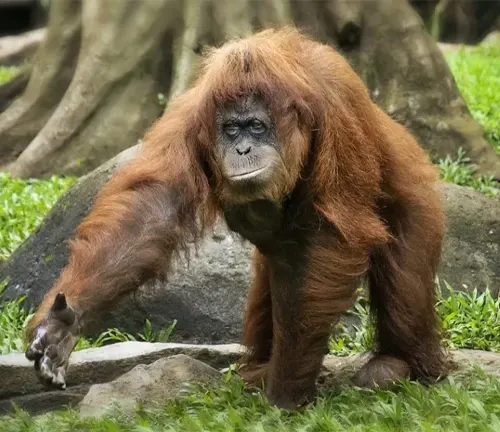
Sumatran orangutans are true masters of the treetops, spending most of their lives high above the forest floor. Their long arms and incredible agility enable them to navigate the dense canopy with grace and precision. Despite their solitary lifestyle, they are highly intelligent and self-sufficient, adapting to the challenges of their environment with remarkable finesse.
Sadly, these magnificent creatures face numerous threats to their survival. Deforestation, driven primarily by the expansion of palm oil plantations, is a significant concern, as it destroys their precious habitat. Additionally, illegal wildlife trade and poaching continue to threaten their existence, with orangutans often sought after as pets or for their body parts.
| Attribute | Description |
|---|---|
| Scientific Name | Pongo abelii |
| Common Name | Sumatran Orangutan |
| Habitat | Rainforests of Sumatra, Indonesia |
| Physical Appearance | Reddish-brown fur, prominent cheek pads (males) |
| Geographic Range | Exclusive to Sumatra |
| Arboreal Lifestyle | Spend most of their lives in trees |
| Social Behavior | Generally solitary, males solitary except during breeding season |
| Diet | Primarily frugivorous (fruit-eating) |
| Conservation Status | Critically Endangered |
| Threats | Deforestation, palm oil plantations, illegal wildlife trade, poaching |
| Ecological Importance | Keystone species, seed dispersal in forests |
| Conservation Efforts | Protection of habitat, combatting illegal trade, raising awareness |
| Role in Ecosystem | Maintains ecological balance in rainforests |
Sumatran Orangutan (Pongo abelii) Guardians of the Rainforest
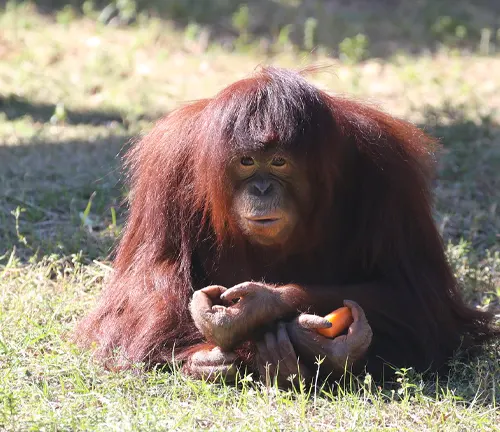
The Sumatran orangutan, scientifically known as Pongo abelii, is a magnificent creature that inhabits the lush rainforests of Sumatra, Indonesia. These gentle giants share a striking resemblance to their Bornean cousins, yet they possess unique characteristics that set them apart. In this article, we will embark on a journey to discover the world of Sumatran orangutans, exploring their habitat, behavior, conservation status, and the critical role they play in maintaining the balance of their ecosystem.
The Enigmatic Sumatran Orangutan
A Closer Look
Sumatran orangutans are one of the two known species of orangutans, the other being the Bornean orangutan (Pongo pygmaeus). They are primarily distinguished by their geographic range and some subtle physical differences. These intelligent creatures are covered in reddish-brown fur, and males typically have prominent cheek pads, which are absent in their Bornean counterparts.
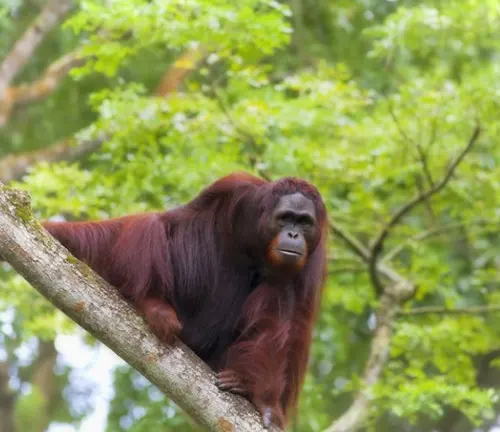
Habitat and Distribution
The Rainforests of Sumatra
Sumatran orangutans are exclusively found on the Indonesian island of Sumatra. Their habitat consists of the dense, tropical rainforests that blanket the island. These rainforests are among the oldest and most biodiverse ecosystems on Earth, making them crucial to the survival of countless species, including the Sumatran orangutan.

Behavior and Lifestyle
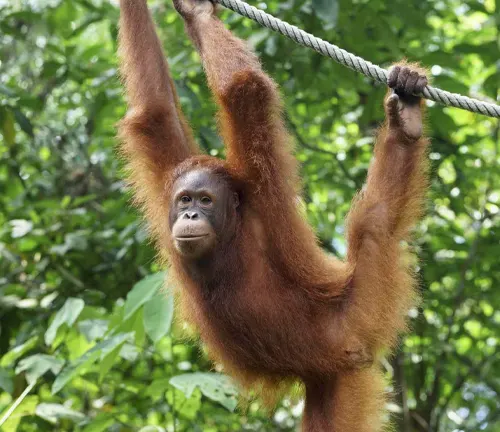
Arboreal Experts
One of the most fascinating aspects of Sumatran orangutans is their arboreal lifestyle. They spend the majority of their lives high up in the trees, using their long arms to swing gracefully from branch to branch. This unique behavior is a testament to their incredible adaptability and strength.
Solitary Nomads
Unlike some other primates, Sumatran orangutans are solitary creatures. Adult males, especially, prefer a solitary existence, only coming into contact with females during the breeding season. This solitary lifestyle is a testament to their self-sufficiency in the wild.
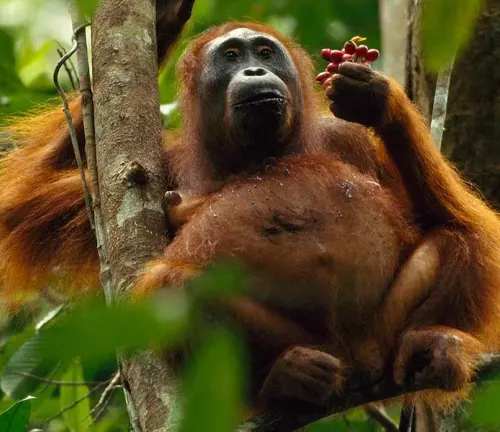
The Perils They Face
Threats to Survival
Sumatran orangutans face numerous threats to their survival. Habitat loss due to deforestation, primarily driven by palm oil plantations, is a major concern. Illegal wildlife trade and poaching further exacerbate the population decline, as these gentle giants are sought after as pets or for their body parts.

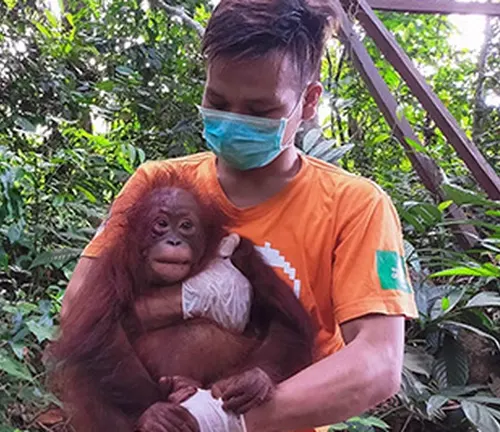
Conservation Efforts
Fortunately, dedicated individuals and organizations are working tirelessly to protect the Sumatran orangutans. Conservation projects aim to preserve their natural habitat, combat illegal poaching, and raise awareness about the importance of these incredible creatures.
Ecological Importance
Sumatran orangutans play a vital role in maintaining the ecological balance of their rainforest habitat. As they travel through the treetops, they disperse seeds from the fruits they consume, contributing to the forest’s regeneration.
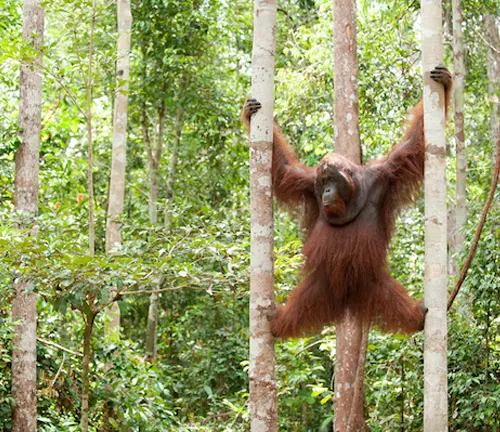
Keystone Species
Considered a keystone species, Sumatran orangutans have a disproportionate impact on their ecosystem. Their presence ensures the survival of various plant species, which, in turn, sustains a myriad of other wildlife.
Frequently Asked Questions (FAQs)
- What is a Sumatran orangutan?
A Sumatran orangutan (Pongo abelii) is a species of great ape native to the island of Sumatra, Indonesia. They are known for their reddish-brown fur and are one of the two recognized species of orangutans. - Where are Sumatran orangutans found in the wild?
Sumatran orangutans are exclusively found in the wild on the Indonesian island of Sumatra. - How do Sumatran orangutans differ from Bornean orangutans?
Sumatran orangutans differ from Bornean orangutans in terms of their geographic range and some subtle physical differences. Sumatran orangutans have a more limited range, and adult males typically have prominent cheek pads, which are absent in their Bornean counterparts. - What do Sumatran orangutans eat in the wild?
Sumatran orangutans are primarily frugivorous, meaning they primarily eat fruits. However, they also consume leaves, bark, insects, and occasionally small animals. - Are Sumatran orangutans endangered, and if so, why?
Yes, Sumatran orangutans are critically endangered. They face threats such as habitat loss due to deforestation, illegal wildlife trade, and poaching, which have led to a significant decline in their population. - What is the typical lifespan of a Sumatran orangutan in the wild?
In the wild, Sumatran orangutans typically have a lifespan of around 30 to 45 years. - How do Sumatran orangutans communicate with each other?
Sumatran orangutans communicate through a combination of vocalizations, body language, and gestures. They use vocal calls, such as long calls and kiss-squeaks, to communicate with other orangutans in their vicinity. - Do Sumatran orangutans build nests, and if so, how often?
Yes, Sumatran orangutans build nests in the trees for resting and sleeping. They create new nests daily, usually one or two per day. - Are Sumatran orangutans kept in captivity for conservation efforts?
Yes, Sumatran orangutans are kept in captivity as part of conservation breeding programs to help increase their population and genetic diversity. - What is the main threat to Sumatran orangutans in their natural habitat?
The main threat to Sumatran orangutans in their natural habitat is deforestation, primarily driven by the expansion of palm oil plantations, which leads to habitat loss and fragmentation. - How large is the population of Sumatran orangutans today?
The population of Sumatran orangutans is estimated to be around 13,000 individuals or less, making them critically endangered. - Can Sumatran orangutans swim?
Sumatran orangutans are capable of swimming, but they generally avoid water and are not known for being strong swimmers. - Do Sumatran orangutans have any natural predators?
Sumatran orangutans have few natural predators, with large predators like tigers being the most significant threat to their young individuals. - What is the role of Sumatran orangutans in their ecosystem?
Sumatran orangutans play a vital role in maintaining the ecological balance of their rainforest habitat by dispersing seeds from the fruits they consume, contributing to the forest’s regeneration. - How can individuals and organizations contribute to Sumatran orangutan conservation?
Individuals and organizations can contribute to Sumatran orangutan conservation by supporting habitat protection efforts, combatting illegal poaching and wildlife trade, promoting sustainable palm oil practices, and raising awareness about the importance of these endangered creatures.



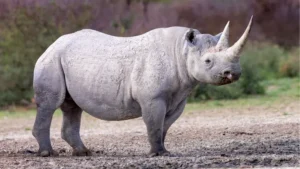

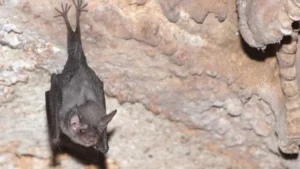


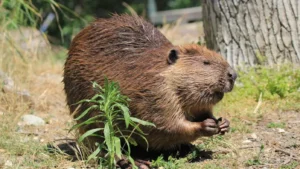

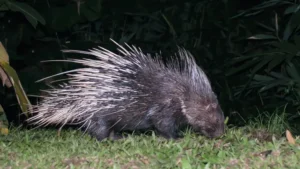

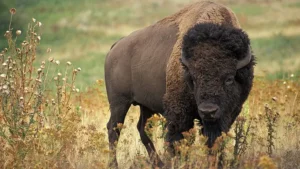

Leave your comment